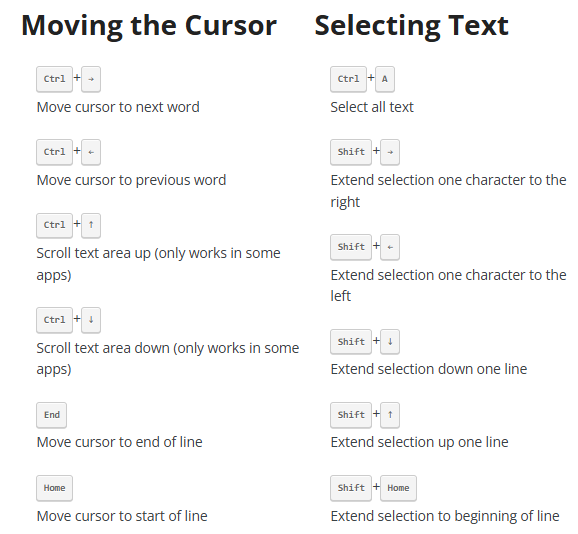
keyboard shortcuts
(Very) Basic Textbox Keyboard Shortcuts
Everyone knows how to use the arrow keys to navigate within textboxes. But not many people know there are a slew of handy keyboard shortcuts for editing text in textboxes. And these keyboard shortcuts work everywhere, even in the most basic input areas – including vanilla HTML forms, such as the









